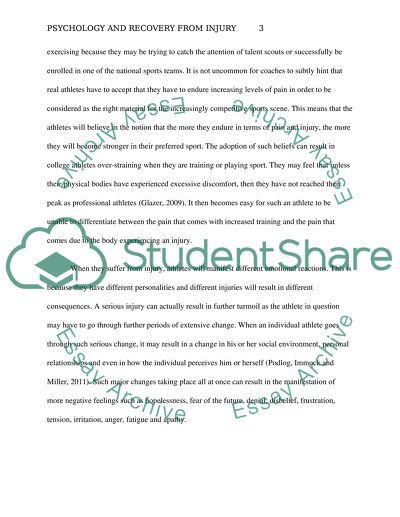Cite this document
(“Recovery from Injury Research Proposal Example | Topics and Well Written Essays - 2000 words”, n.d.)
Recovery from Injury Research Proposal Example | Topics and Well Written Essays - 2000 words. Retrieved from https://studentshare.org/psychology/1633500-how-does-the-psychology-of-college-athletes-effect-their-recovery-from-injuries
Recovery from Injury Research Proposal Example | Topics and Well Written Essays - 2000 words. Retrieved from https://studentshare.org/psychology/1633500-how-does-the-psychology-of-college-athletes-effect-their-recovery-from-injuries
(Recovery from Injury Research Proposal Example | Topics and Well Written Essays - 2000 Words)
Recovery from Injury Research Proposal Example | Topics and Well Written Essays - 2000 Words. https://studentshare.org/psychology/1633500-how-does-the-psychology-of-college-athletes-effect-their-recovery-from-injuries.
Recovery from Injury Research Proposal Example | Topics and Well Written Essays - 2000 Words. https://studentshare.org/psychology/1633500-how-does-the-psychology-of-college-athletes-effect-their-recovery-from-injuries.
“Recovery from Injury Research Proposal Example | Topics and Well Written Essays - 2000 Words”, n.d. https://studentshare.org/psychology/1633500-how-does-the-psychology-of-college-athletes-effect-their-recovery-from-injuries.


